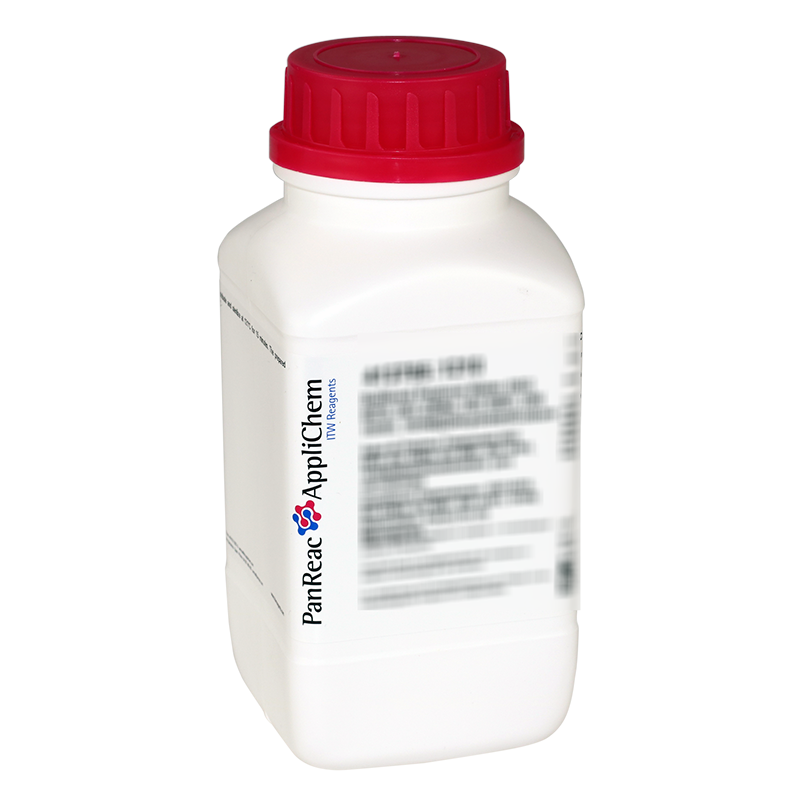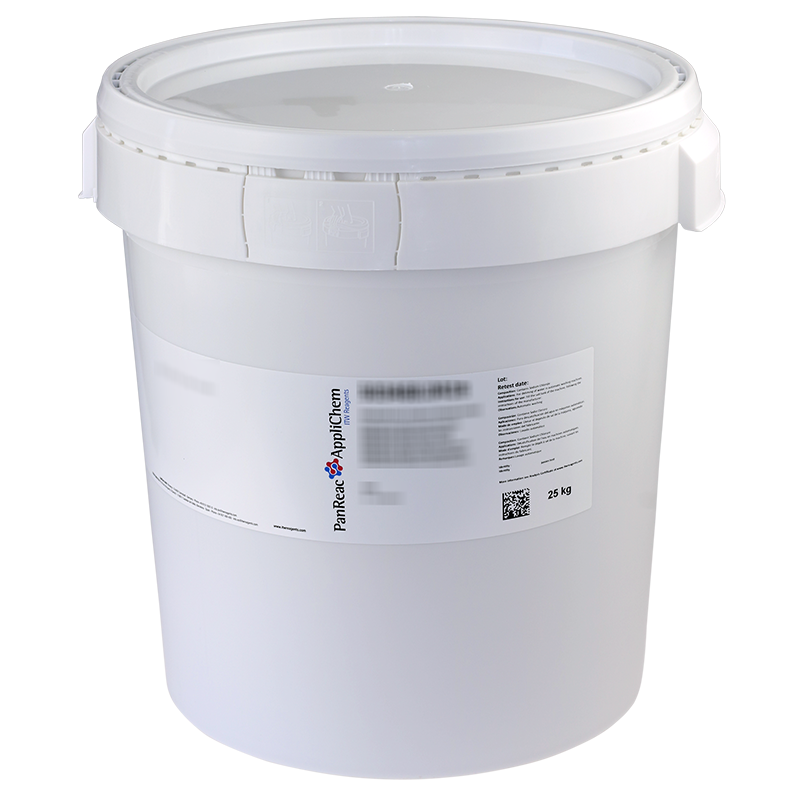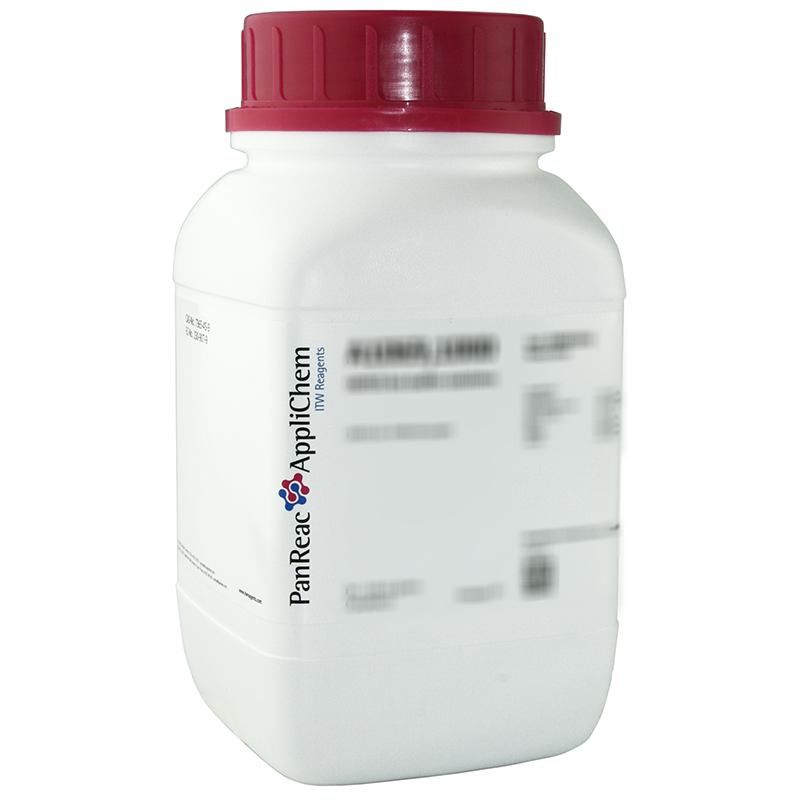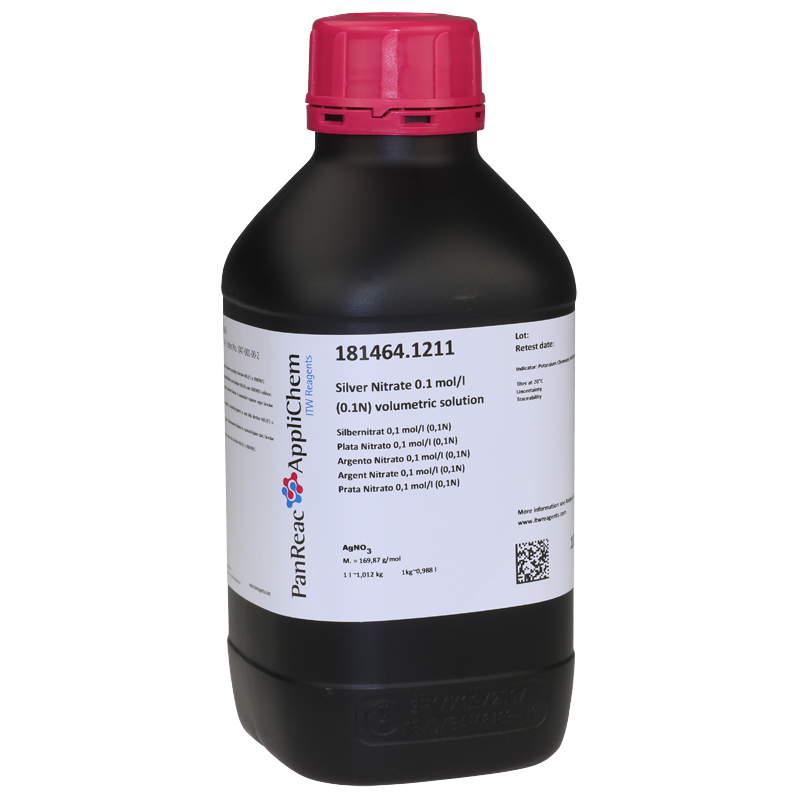Featured products
-

-

Potassium Carbonate pure
141490 -

-

-

-

531 products available
- Ammonium Chloride (USP, BP, Ph. Eur.) pure, pharma grade141121.1214 · 12125-02-9
- Ammonium di-Hydrogen Phosphate (Reag. USP, Ph. Eur.) for analysis, ACS131126.0416 · 7722-76-1
- Ammonium di-Hydrogen Phosphate (Reag. USP, Ph. Eur.) for analysis, ACS131126.1211 · 7722-76-1
- Ammonium Hydrogen Carbonate (BP, Ph. Eur.) pure, pharma grade141116.0416 · 1066-33-7
- Ammonium Hydrogen di-Fluoride pure141911.1211 · 1341-49-7
- Ammonium Iron(II) Sulfate 0.1 mol/l (0.1N) volumetric solution181369.1611 · 7783-85-9
- Ammonium Iron(II) Sulfate 6-hydrate (Reag. Ph. Eur.) for analysis, ISO131368.1211 · 7783-85-9
- Ammonium Iron(II) Sulfate 6-hydrate (Reag. Ph. Eur.) for analysis, ISO131368.1210 · 7783-85-9
- Ammonium Iron(II) Sulfate 6-hydrate pure141368.0416 · 7783-85-9
- Ammonium Iron(III) Sulfate 12-hydrate (Reag. USP, Ph. Eur.) for analysis, ACS, ISO131365.0416 · 7783-83-7
- Ammonium Iron(III) Sulfate 12-hydrate (Reag. USP, Ph. Eur.) for analysis, ACS, ISO131365.1210 · 7783-83-7
- Ammonium Molybdate 4-hydrate (Reag. USP, Ph. Eur.) for analysis, ACS, ISO131134.1209 · 12054-85-2
- Ammonium Molybdate 4-hydrate (Reag. USP, Ph. Eur.) for analysis, ACS, ISO131134.1211 · 12054-85-2
- Ammonium Molybdate 4-hydrate (Reag. USP, Ph. Eur.) for analysis, ACS, ISO131134.1208 · 12054-85-2
- Ammonium Peroxodisulfate (APS) BioChemica A1142,0250 · 7727-54-0
Salts and Minerals

In chemistry, a salt is a chemical compound consisting of an ionic assembly of cations and anions. Salts are composed of related numbers of cations (positively charged ions) and anions (negatively charged ions) so that the product is electrically neutral (without a net charge). The term salt is also used to refer specifically to common table salt, or sodium chloride.
In geology and mineralogy, a mineral or mineral species is, broadly speaking, a solid chemical compound with a fairly well-defined chemical composition and a specific crystal structure that occurs naturally in pure form.
Mineral salts are inorganic salts that need to be ingested or absorbed by living organisms for healthy growth and maintenance. They comprise the salts of the trace elements in animals and the micronutrients of plants.
Mineral salts have structural functions and functions in the regulation of pH, osmotic pressure and biochemical reactions involving specific ions. They participate in chemical reactions at electrolyte levels. Vital processes require the presence of certain salts in the form of ions such as chlorides, carbonates and sulfates. The most abundant cations in the composition of living beings are Na+, K+, Ca2+, Mg2+. The most representative anions are Cl-, PO43-, CO32-, HCO3-.
- Form part of the bone structure (providing calcium, phosphorus, magnesium and fluorine).
- Regulate the water balance inside and outside the cells (electrolytes), also known as osmosis process.
- Intervene in nerve excitability and muscle activity (calcium, magnesium).
- Allow substances to enter the cells (glucose needs sodium to be used as a source of energy at the cellular level).
- Collaborate in metabolic processes (chromium is necessary for the functioning of insulin, selenium participates as an antioxidant).
- Mineral salts contribute to the proper functioning of the immune system (zinc, selenium, copper) and are also part of large molecules such as hemoglobin in blood and chlorophyll in vegetables.
Composition
Salts are formed by a chemical reaction between:
- a base and an acid: NH3 + HCl → NH4Cl
- a metal and an acid: Mg + H2SO4 → MgSO4 + H2
- a metal oxide and an acid: CuO + 2HNO3 → Cu(NO3)2 + H2O
- a salt and an acid: Na2CO3 + 2HCl → 2NaCl + H2O + CO2
Characteristics
Salts often form a crystal structure or crystal lattice, a highly ordered formation of molecules. This ordered structure and strong ionic bonding leads many salts to have some special properties. They tend to be crystalline solids, ionic crystals also tend to be hard and brittle due to strong ionic bonding throughout the crystal. Salts also have high boiling and melting points because it takes a lot of energy to break those bonds and change the salt's matter state.
Appearance
Solid salts tend to be transparent. In many cases, the apparent opacity or transparency are only related to the difference in size of the individual monocrystals. Since light reflects from the grain boundaries (boundaries between crystallites), larger crystals tend to be transparent, while the polycrystalline aggregates look like white powders.
Why are transition metals colored?
The majority of salts of transition metals are colored in aqueous solutions and also in crystals due to d-d transitions. Electrons are arranged around the nucleus of the metal atom in orbitals; transition metals unlike other metals, have partially filled ‘d’ orbitals, which can hold up to 10 electrons. When ligands are present, some d orbitals become higher in energy than before, and some become lower. Electrons can then move between these higher and lower d orbitals by absorbing a photon of light. When an electron from a lower energy d orbital is excited to a higher energy d orbital, the energy of excitation corresponds to the frequency of light absorbed. This frequency generally lies in the visible region. The absorption of light affects the perceived color of the compound or complex. The wavelength of the light absorbed is affected by the size of the energy gap between the d orbitals, which is in turn affected by the type of ligand and the charge on metal ion. However, these transitions are not possible with empty or full-filled i.e. d0 and d10 configurations and metal ions with these configurations usually does not show any color (said to be white).
| IONS | OUTER SHELL ELECTRONIC CONFIGURATION | COLOR | EXAMPLES |
| Sc3+, Ti4+ | 3d0 | Colorless (empty d-orbitals) | Scandium(III) chloride, ScCl3 Titanium(IV) chloride, TiCl4 |
| Ti3+ | 3d1 | Purple | Titanium(III) chloride, TiCl3 |
| V3+ | 3d2 | Green | Vanadium(III) chloride, VCl3 |
| V2+, Cr3+ | 3d3 | Violet | Vanadium(II) sulfate, VSO4 Chromium(III) nitrate, Cr(NO3)3 |
| Mn3+ | 3d4 | Purple-red | Manganese(III) acetate, Mn(CH3COO)3 |
| Mn2+ | 3d5 | Pink | Manganese(II) sulfate, MnSO4 |
| Fe3+ | 3d5 | Yellow | Iron(III) chloride, FeCl3 |
| Fe2+ | 3d6 | Pale blue/green | Iron(II) sulfate, FeSO4 |
| Co2+ | 3d7 | Pink-red | Cobalt(II) chloride CoCl2.6H2O (CoCl2 anhidrous is blue) |
| Ni2+ | 3d8 | Green | Nickel(II) nitrate, Ni(NO3)2 |
| Cu2+ | 3d9 | Blue | Copper(II) sulfate, CuSO4 |
| Cu+, Zn2+ | 3d10 | Colorless (full d-orbitals) | Copper(I) bromide, CuBr Zinc sulfate, ZnSO4 |
| MnO4- | * | Purple | Potassium permanganate, KMnO4 |
*The permanganate ion is the source of the color, as a ligand-to-metal charge transfer takes place between the oxygen's p orbitals and the empty d-orbitals on the metal.
Conductivity
Conductivity (or specific conductance) of an electrolyte solution is a measure of its ability to conduct electricity. When in solution or the molten state, most salts are completely dissociated into negatively and positively charged ions and are good electrolytes (conductors of electricity).
Salts are ionic compounds. Ionic compounds cannot conduct electricity when solid because, although they are entirely composed of charged particles called ions, these ions are not free to move: a factor vital to conduction of electricity. This static inertia is not maintained when the compound is melted. This is because the ions have sufficient energy to overcome the electrostatic attraction that draws them together and move away from one another. As they are able to move, the ions are free to conduct electrical current. The same thing occurs when you dissolve a salt in an appropriate solvent, such as water. The ions split apart, or dissociate, due to the polarity of the water. As such, the ions are free to move through the liquid to conduct a current.
Compounds with strong conductivity dissociate completely into charged atoms or molecules, or ions, when dissolved in water. These ions can move and carry a current effectively. The higher the concentration of ions, the greater the conductivity. Sodium chloride is an example of a compound with strong conductivity. It dissociates into positively charged sodium and negatively charged chlorine ions in water. Ammonium sulfate, calcium chloride, sodium phosphate and zinc nitrate are other examples of salts with strong conductivity, also known as strong electrolytes. Strong electrolytes tend to be inorganic compounds, meaning that they lack carbon atoms. Organic compounds, or carbon-containing compounds, are often weak electrolytes or are nonconductive.
Solubility
Solubility is the ability of a substance to dissolve. More specifically, it is the maximum amount of solute that can be dissolved in a solvent at equilibrium.
According to the IUPAC definition, solubility is the analytical composition of a saturated solution expressed as a proportion of a designated solute in a designated solvent. Solubility may be stated in various units of concentration such as molarity, molality, mole fraction, mole ratio, mass (solute) per volume (solvent) and other units.
Many ionic compounds (formed when metals react or bond with non-metals) exhibit significant solubility in water or other polar solvents. Unlike molecular compounds, salts dissociate in solution into anionic and cationic components. The lattice energy, the cohesive forces between these ions within a solid, determines the solubility. The solubility is dependent on how well each ion interacts with the solvent. The solubility of a given solute in a given solvent is function of temperature. A number of descriptive terms are used to qualify the extent of solubility for a given application:
| TERM | GRAMS OF SALT DISSOLVED IN 100 mL OF WATER AT 25 °C | EXAMPLES |
| Very soluble | > 100 | Ammonium acetate Potassium thiocyanate |
| Freely soluble | 10 - 100 | Sodium chloride Magnesium sulfate |
| Soluble | 3 - 10 | Ammonium oxalate Mercury(II) chloride |
| Sparingly soluble | 1 - 3 | Calcium benzoate Lead(II) chloride |
| Slightly soluble | 0.1 - 1 | Silver sulfate Lithium fluoride |
| Very slightly soluble | 0.01 - 0.1 | Strontium chromate Zinc tartrate |
| Practically insoluble or insoluble | ≤ 0.01 | Barium sulfate Silver chloride |
Is a salt soluble or not?
The solubility of a substance is an entirely different property from the rate of solution, which is how fast it dissolves. The smaller a particle is, the faster it dissolves although there are many factors to add to this generalization.
There are a set of rules that are a general guide to determine if an inorganic compound is soluble in water. The rules are meant as a guide only. There are exceptions to these rules. The solubility rules shown below are for common ionic solids in water at room temperature. Some compounds can have very different solubilities in hot or cold water.
If two rules appear to contradict each other, the preceding rule takes precedence.
- Salts containing Group I elements are soluble (Li+, Na+, K+, Cs+, Rb+). Exceptions to this rule are rare. Salts containing the ammonium ion (NH4+) are also soluble.
- Salts containing nitrate ion (NO3-) are generally soluble.
- Salts containing Cl-, Br-, I- are generally soluble. Important exceptions to this rule are halide salts of Ag+, Pb2+, and (Hg2)2+. Thus, AgCl, PbBr2, and Hg2Cl2 are all insoluble.
- Most silver salts are insoluble. AgNO3 and Ag(C2H3O2) are common soluble salts of silver; virtually anything else is insoluble.
- Most sulfate salts are soluble. Important exceptions to this rule include BaSO4, PbSO4, Ag2SO4 and SrSO4.
- Most hydroxide salts are only slightly soluble. Hydroxide salts of Group I elements are soluble. Hydroxide salts of Group II elements (Ca, Sr, and Ba) are slightly soluble. Hydroxide salts of transition metals and Al3+ are insoluble. Thus, Fe(OH)3, Al(OH)3, Co(OH)2 are not soluble.
- Most sulfides of transition metals are highly insoluble. Thus, CdS, FeS, ZnS, Ag2S are all insoluble. Arsenic, antimony, bismuth, and lead sulfides are also insoluble.
- Carbonates are frequently insoluble. Group II carbonates (Ca, Sr, and Ba) are insoluble. Some other insoluble carbonates include FeCO3 and PbCO3.
- Chromates are frequently insoluble. Examples: PbCrO4, BaCrO4.
- Phosphates are frequently insoluble. Examples: Ca3(PO4)2, Ag3PO4.
- Fluorides are frequently insoluble. Examples: BaF2, MgF2, PbF2.
Solubility Product Constant, Ksp
The solubility product constant, Ksp, is the equilibrium constant for a solid substance dissolving in an aqueous solution. It represents the extent to which an ionic compound dissolves in water: there is a limit to how much salt can be dissolved in a given volume of water. This amount is given by the solubility product, Ksp. This value depends on the type of salt (AgCl vs. NaCl, for example), temperature, and the common ion effect.
Solubility product constants are used to describe saturated solutions of ionic compounds of relatively low solubility. A saturated solution is in a state of dynamic equilibrium between the dissolved, dissociated, ionic compound and the undissolved solid.
Consider the general dissolution reaction below (in aqueous solutions):
CmAn ⇋ mCn+ + nAm-
Where C represents a cation, A an anion and m and n are their respective stoichiometric coefficients.
The equilibrium constant (Ksp) expression for a salt is written following the same rules as for any other equilibrium. The solubility product or ion product, Ksp, is the product of the molar concentrations (equilibrium) of the constituent ions, each raised to the power of the stoichiometric coefficient in the equilibrium equation. The Ksp expression for the above equilibrium is:
Ksp = [Cn+]m · [Am-]n
Note that the reactant, CmAn, is not included in the Ksp equation. Solids are not included when calculating equilibrium constant expressions, because their concentrations do not change the expression; any change in their concentrations are insignificant, and therefore omitted.
The value of Ksp indicates the solubility of an ionic compound, i.e., the lower its value the less soluble the compound will be. It is also easily observable that if we increase the concentration of one of the components or ions (for example, by adding a substance that upon dissociation produces that same ion) and reach equilibrium again, the concentration of the other ion will be decreased (known as the common ion effect).
Under certain conditions, the equilibrium solubility can be exceeded to give a so-called supersaturated solution, which is metastable. Metastability of crystals can also lead to apparent differences in the amount of a chemical that dissolves depending on its crystalline form or particle size. A supersaturated solution generally crystallizes when 'seed' crystals are introduced, and rapid equilibration occurs.
Molar Solubility
Molar solubility, which is directly related to the solubility product, is the number of moles of the solute that can be dissolved per liter of solution before the solution becomes saturated. Once a solution is saturated, any additional solute precipitates out of the solution. The units are molarity (M), or mole liter-1 (mol/L). The molar solubility of a compound can be calculated directly from its solubility product.
Conversion of Ksp to solubility
In general, with the chemical equilibrium
CmAn ⇋ mCn+ + nAm-
| CmAn | ⇋ | mCn+ | + | nAm- | |
| Concentration at equilibrium | - | ms | ns |
Where s is the molar solubility of the compound in water.
Ksp = [C]m · [A]n = (ms)m · (ns)n = mm · nn · s(m+n)
and the following table, showing the relationship between the solubility of a salt and the value of its solubility product, can be derived:
| SALT | m | n | SOLUBILITY, s (MOLAR) |
| AgCl | 1 | 1 | Ksp1/2 |
| Ca(SO4) | |||
| Fe(PO4) | |||
| Na2(SO4) | 2 | 1 | (Ksp/4)1/3 |
| Ca(OH)2 | 1 | 2 | |
| Na3(PO4) | 3 | 1 | (Ksp/27)1/4 |
| FeCl3 | 1 | 3 | |
| Al2(SO4)3 | 2 | 3 | (Ksp/108)1/5 |
| Ca3(PO4)2 | 3 | 2 |
Melting point
Salts characteristically have high melting points. For example, sodium chloride melts at 801 °C. Some salts with low lattice energies are liquid at or near room temperature. These include molten salts, which are usually mixtures of salts, and ionic liquids, which usually contain organic cations. These liquids exhibit unusual properties as solvents.
Strong salt
Strong salts or strong electrolyte salts are chemical salts composed of strong acids or bases. These ionic compounds dissociate completely in water. They are generally odorless and nonvolatile. Most group 1 and 2 metals form strong salts. Strong salts are especially useful when creating conductive compounds as their constituent ions allow for greater conductivity.
Weak salt
Weak salts or "weak electrolyte salts" are, as the name suggests, composed of weak acids or bases. They are generally more volatile than strong salts. They may be similar in odor to the acid or base they are derived from. For example, sodium acetate, CH3COONa, smells similar to acetic acid CH3COOH.
Water of crystallization
Generally, salts are found as crystals with water molecules present in them. This water is called water of crystallization and such salts are called hydrated salts.
For example, copper sulfate crystal has five molecules of water for each copper sulfate molecule. This is written as CuSO4·5H2O. This water of crystallization gives the crystal its shape. It also gives color to some crystals. On heating, hydrated salts lose their water of crystallization and, as a result, the crystals lose their shape and color and change to a powdery substance.
The hydrated salts that have lost their water of crystallization are called anhydrous salts.
Acid-base properties
Salts, when placed in water, will often react with the water to produce H3O+ or OH-. This is known as a hydrolysis reaction. Based on how strong the ion acts as an acid or base, it will produce varying pH levels. When water and salts react, there are many possibilities due to the varying structures of salts. A salt can be made of either a weak acid and strong base, strong acid and weak base, a strong acid and strong base, or a weak acid and weak base. The reactants are composed of the salt and the water and the products side is composed of the conjugate base (from the acid of the reaction side) or the conjugate acid (from the base of the reaction side).
pH value of salts
There are several guiding principles:
- Salts that are from strong bases and strong acids do not hydrolyze. The pH will remain neutral at 7. Halides and alkaline metals dissociate and do not affect the H+ as the cation does not alter the H+ and the anion does not attract the H+ from water. This is why NaCl is a neutral salt. In general, salts containing halides (except F-) and an alkaline metal (except Be2+) will dissociate into spectator ions.
- Salts that are from strong bases and weak acids do hydrolyze, which gives it a pH greater than 7. The anion in the salt is derived from a weak acid, most likely organic, and will accept the proton from the water in the reaction. This will have the water act as an acid that will, in this case, leaving a hydroxide ion (OH-). The cation will be from a strong base, meaning from either the alkaline or alkaline earth metals and, like before, it will dissociate into an ion and not affect the H+.
- Salts of weak bases and strong acids do hydrolyze, which gives it a pH less than 7. This is due to the fact that the anion will become a spectator ion and fail to attract the H+, while the cation from the weak base will donate a proton to the water forming a hydronium ion.
- Salts from a weak base and weak acid also hydrolyze as the others, but a bit more complex and will require the Ka and Kb to be taken into account. Whichever is the stronger acid will be the dominate factor in determining whether it is acidic or basic. The cation will be the acid, and the anion will be the base and will form either form a hydronium ion or a hydroxide ion depending on which ion reacts more readily with the water.
| CATIONS | ANIONS | pH OF SALT SOLUTION | EXAMPLES |
| From weak bases | From strong acids | pH < 7 (acidic) | Ammonium chloride NH4Cl |
| From strong bases | From weak acids | pH > 7 (basic) | Sodium acetate CH3COONa |
| From strong bases | From strong acids | pH = 7 (neutral) | Sodium chloride NaCl |
| From weak bases | From weak acids | Depends on Ka (cation) and Kb (anion): | |
| Ka > Kb --> pH < 7 | Ammonium formate | ||
| Ka = Kb --> pH = 7 | Ammonium acetate | ||
| Ka < Kb --> pH > 7 | Ammonium carbonate |
Applications and quality grades
Salts are used in many industrial processes. Most of chemical products rely on salts at some stage of their manufacturing. Salts are used in the manufacture of glass, paper, plastic, rubber, textiles, dyes, leather, cosmetics, pharmaceuticals, fertilizers, etc.
In chemical quality control labs, research and development or in innovation departments of any industry or institution as analytical reagent.
We offer a broad range of quality grades with strictly guaranteed specifications, enabling the selection of the right salt for your specific application:
- Reagents for analysis (p.a.) according to ISO (International Organization for Standardization), ACS (American Chemical Society) and pharmacopoeia specifications for reagents (Reag Ph. Eur., Reag. USP).
- For HPLC, such as alkyl sulfonates for ion pair chromatography
- For IR spectroscopy, such as potassium bromide (KBr)
- Reagents for Life Sciences: BioChemica, for molecular biology or for cell culture.
- Pure products for general use.
- Volumetric solutions (standards), concentrated and ready to use, for quantitative analysis.
- Solutions for volumetric analysis, such as potassium chloride solutions for electrode maintenance, or silver sulfate in sulfuric acid for COD determinations.
- Products for synthesis.
- Pharma grade: raw materials for the pharmaceutical industry in manufacturing processes and as excipients in the final formulation, complying with the pharmacopoeia specifications (monographs), such as US Pharmacopea/National Formulary (USP-NF), European Pharmacopoeia (EP or Ph. Eur.), British Pharmacopoeia (BP), etc., and GMP-IPEC grade, including regulatory documents.
- Food grade according to European regulations (EC) or Food Chemicals Codex (FCC). Salts and minerals for food industry:
Minerals are inorganic compounds, mainly salts, which are essential for life. Found in bones and teeth, they are involved in metabolic and biochemical processes. Like all nutrients, minerals are found in basic foods such as meat, milk, fish, vegetables, fruits, and cereals. Some minerals are not present in relevant quantities in food. Processing can also reduce food’s nutritional value. Therefore, a wide range of nutrients and other ingredients are used in food manufacturing, including minerals. They are added to food in order to enrich or fortify it, so as to add to or improve any of its nutritional characteristics.
The addition of minerals in manufacturing processes is done in infant formula production, nutraceuticals, milk derivatives, among others.
PanReac AppliChem’s minerals portfolio fulfills the EC and FCC standards. Our products are produced according to a strict quality policy, in accordance with ISO and HACCP.
Sectors
- Analytical Laboratories, Quality Control, Chemical and Biochemical labs
- Research, Development, and Innovation (R&D)
- Biopharmaceutical and Pharmaceutical development and manufacturing
- Life Sciences
- Cosmetics and Healthcare
- Food and Beverages
- Inorganic and Organic synthesis
- Educational or academic institutions
- Paper industry
- Soap and detergent industry
- Metallurgy
- Agriculture
- Pool maintenance
Find more information in our brochure:



